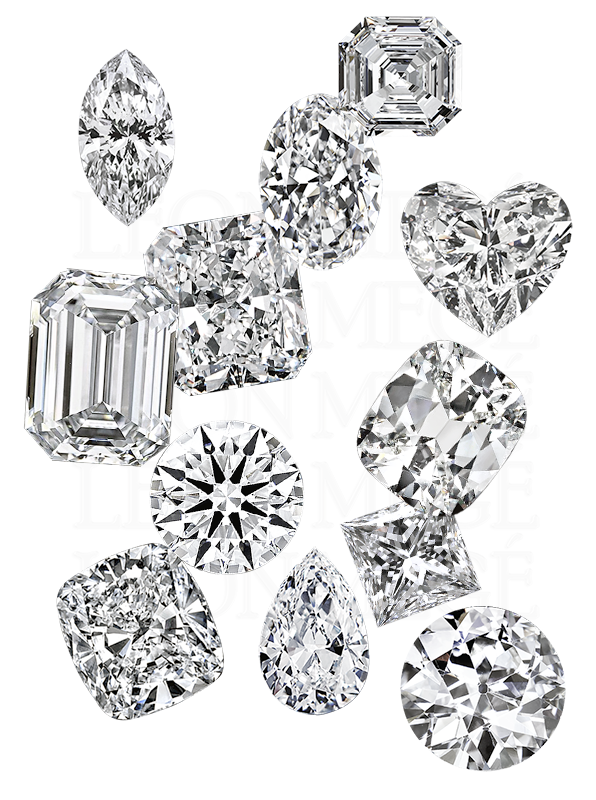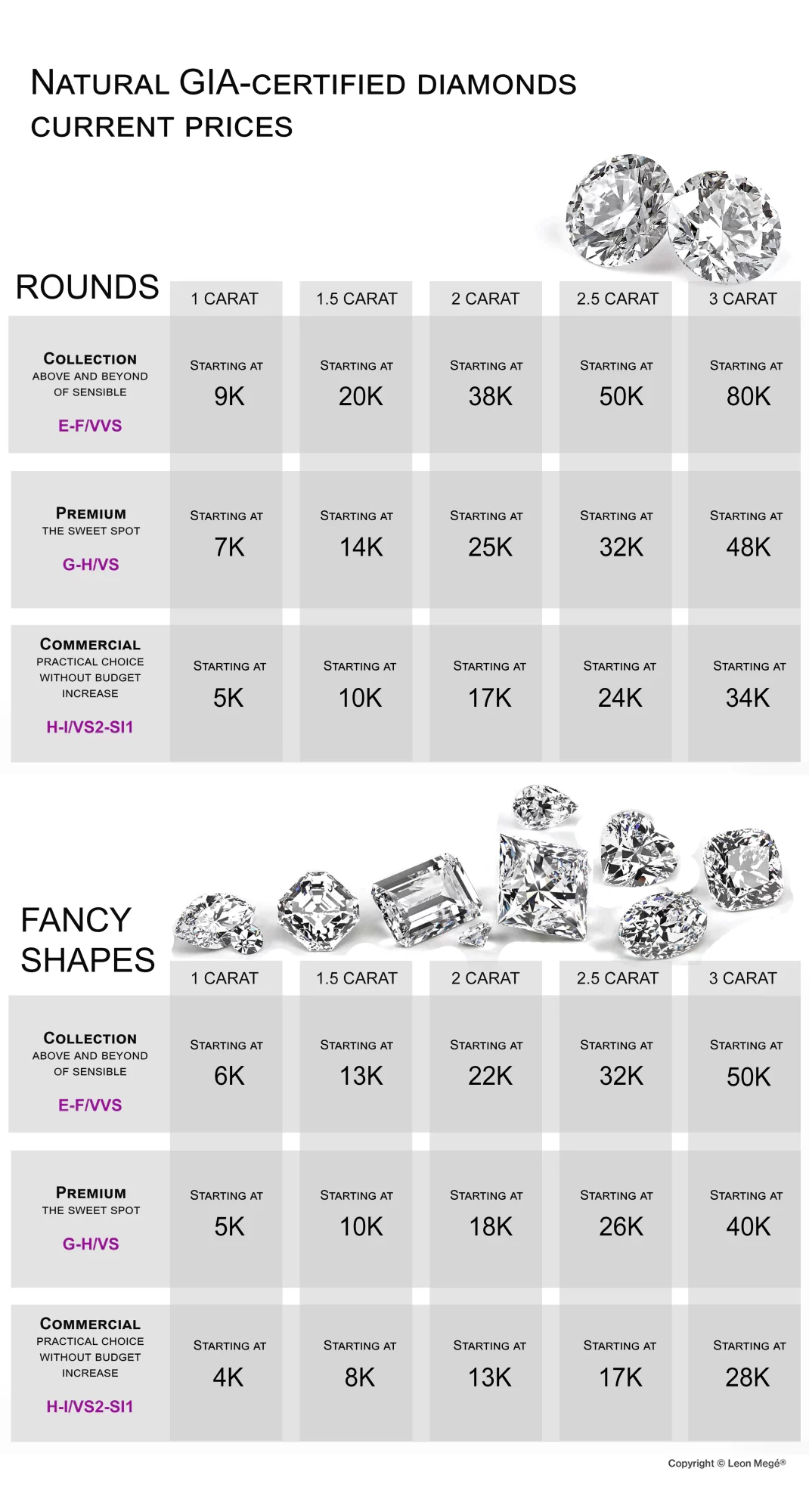A three-stone ring has two side stones flanking the center stone, amplifying its presence and elevating it to a superior level of sophistication.
Craftsmanship and design
The properly chosen angles and curvatures are the key elements of the well-balanced, proportionate, and eye-pleasing ring. Their choice is the most crucial decision a jeweler makes, and they determine the final composition. The precise fit of each prong, joint, and element makes the transition from the center to the side stones and the shank seamless and natural.
Hand-forging is the secret to a well-proportioned, properly weighted ring designed to maximize the stone’s best features. The center stone in a bespoke ring is always set as low as possible. The ring’s height is determined by the finger size, center stone size, and the type of side stones used. Raising the center stone is a bad decision, usually requested for the wrong reasons. A triplet is a three-stone ring version where all stones have the same shape.
Selecting the center stone
A three-stone ring can be built with virtually any stone in the center. The side stones must be carefully chosen to complement the center. Otherwise, they can change the look of the center stone, making it appear shorter, wider, more rounded, or square. Elongated center stones look better in a three-stone ring because the sides tend to widen them sideways visually.
For center stones with a 1:1 length-to-width ratio, the best sides are:
- Round brilliants: baguettes, bullets, pears, hearts, and narrow shields.
- Asschers: step-cut bullets or shields.
- Square cushions, brilliants, radiants, and princess cuts: brilliant narrow shields, baguettes, or trillions
- Antique cushions: step-cut baguettes or bullets
- Heart shapes: bullets or pears
For elongated center stones:
- Emerald cuts: trapezoids, shields, half-moons, large bullets, all step-cut.
- Modern cushions: half-moons, shields, bullets.
- Antique cushions: step-cut half-moons, trapezoids, shields, and French cuts.
- Radiants and ovals: half-moons, trapezoids, trillions, shields, bullets.
- Pear shapes: bullets, baguettes, or pears.
Symmetry is essential for emerald cuts, Asschers, and cushions. A poorly shaped center stone stands out more in a three-stone ring. A diamond in a D- to I-color range is recommended. Lower color grades can be challenging to pair with matching side stones.


Side kick diamonds
For a three-stone ring to look impeccable, side stones must be well-proportioned. A wrong set of stones can throw the entire ring off balance. Side stones are angled differently from the center, depending on their shape. Wide side stones set North-South are part of the ring’s head. Baguettes or bullets aligned with the shank are not. Therefore, baguettes and bullets are projected from the center stone at a steep angle. Other side stones are angled less to blend better with the center stone.
A triplet is a three-stone ring version where all stones have the same shape. Its look varies considerably depending on the proportion between the center and side stones. Such stones are less angled and leveled more evenly. Side stones’ physical dimensions (length and width) do not always correlate to the carat weight. Every set of matching side stones is unique and should be evaluated by millimeter size, not weight. Side stones cut from inverted rough diamond crystals called “mackle” are flat. These stones look big and weigh much less than well-proportioned stones. The tradeoff is their lackluster brilliance and glassy appearance.
Side stones that are:
- disproportionally big for the center will appear small and insignificant
- too small will give the feeling that the center does not belong to the ring
- higher than the center in color will make the center look dark
- poorly matched in size and shape will make the ring appear lopsided
All three stones should have similar faceting arrangements and facet sizes. Mismatched faceting will compromise the look. In addition, fluorescence can play nasty tricks on the ring’s appearance. Fluorescent side stones can stand out in certain lighting conditions and should not be paired with a fluorescence-free center stone.
Why three stones are better than one
A three-stone style offers the following benefits:
- It makes a ring appear important. Most people feel that a stone that deserves a supporting cast is exceptional.
- It conceals the shank. Minimum visible metal is a hallmark of the finest craftsmanship.
- It solves “inadequate finger coverage” concerns.
- It offers an opportunity to mix different colors if desired.
- It helps fake a “big look” with only a modest cost increase. Large side stones blend with the center stone blurring the line of separation. An observer cannot make the center stone dimensions. It creates an illusion of a much wider and bigger stone.
- It intensifies the color of fancy colored diamonds and colored gemstones against a contrasting background of white diamonds.


Three-stone ring meaning
The three-stone design dates back centuries. Three, as a number, has had a special meaning throughout history. Together, three stones represent a couple’s journey through life. The center signifies the present, while the smaller stones personify the past and the future. Combined, they are the three foundation blocks of a family – friendship, love, and fidelity.
The three stones are eternal reminders to love, honor and cherish one another if you forget. Nothing is more magical or everlasting than the symbolism of a three-stone ring representing the sacred unity of the Father, the Word, and the Holy Ghost for Christians. Followers of Islam can find deep meaning in the Trinity of Allah, the Mother (Mary), and the Messiah, the son of Mary. For Jews, the Trinity is Neo’s girlfriend in the movie Matrix.


